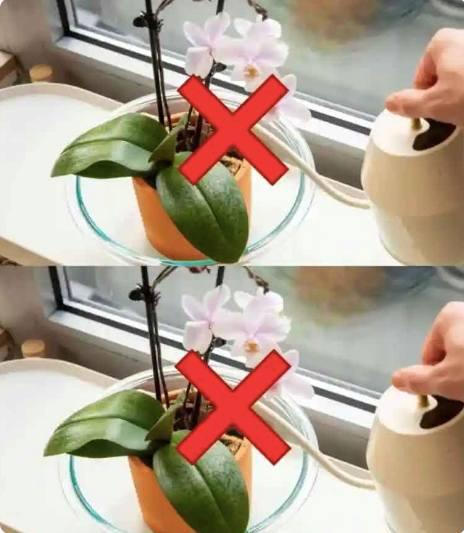ADVERTISEMENT
**1. The Blooming Phase:**
When you first acquire an orchid, whether it’s a Phalaenopsis, Cattleya, or any other popular variety, it’s typically in its blooming phase. The flowers are at their peak, and the plant often appears vibrant and healthy. This phase is the one most orchid owners are familiar with, as it’s the most visually striking period. Depending on the type of orchid, the blooming phase can last from several weeks to a few months.
During this phase, orchids require specific care to ensure the flowers thrive. The right amount of light, temperature, humidity, and proper watering are key to maintaining healthy blooms. Once the flowers start to wilt and fade, many people mistakenly assume the plant is no longer viable and begin to dispose of it. However, this is where the danger lies.
**2. The Post-Bloom Phase:**
After blooming, orchids typically enter a resting phase or a period of dormancy. The flowers drop off naturally, and the plant may appear to lose some of its vibrancy. This is a natural part of the orchid’s lifecycle. During this phase, the plant is redirecting its energy from flower production to other functions, like leaf development or root growth.
This resting phase may be accompanied by a reduction in visible growth or the appearance of wilting leaves. However, just because the plant seems less vibrant does not mean it is dying. In fact, this is the perfect time for you to provide care that helps the plant regain its strength and prepare for the next blooming cycle. Orchids are incredibly resilient, and the post-bloom phase is just another step in their life cycle.
**3. Dormancy or Rest Period:**
Many orchids, especially Phalaenopsis (the most commonly grown variety), go through a period of dormancy or rest after blooming. This period can last anywhere from 1-3 months, depending on the orchid’s variety and the environmental conditions in which it is kept. During dormancy, it’s crucial not to overwater the orchid or apply too much fertilizer. The plant does not need the same level of care it did during its blooming period.
Some orchid owners mistakenly throw away their orchids during dormancy, thinking that the plant has died. However, this is a critical mistake. Orchids can bounce back from dormancy with the right care. In fact, with a bit of patience and proper maintenance, you can help your orchid thrive during this dormant period and have it ready to bloom again.
—
### **Why Throwing Away Your Orchid After 7 Days Is Dangerous**
One of the most common mistakes orchid owners make is assuming that an orchid is “done” or “dying” after a brief period of not blooming—often only a week or two. This is particularly true if the orchid owner doesn’t understand the natural cycle of the plant or doesn’t know how to care for it during its resting phase. In many cases, this can lead to the plant being discarded unnecessarily.
**1. Orchids Need Time to Recover:**
It’s important to understand that orchids, like all living things, need time to recover after their blooming period. Just because an orchid isn’t flowering doesn’t mean it is dead or should be thrown away. In fact, orchids need their downtime to rebuild their energy and store nutrients for the next bloom cycle. Throwing away your orchid after only 7 days of seemingly no growth or activity is dangerous because you miss the opportunity to help your plant recover and regenerate.
**2. Misunderstanding Orchid Dormancy:**
Orchids, particularly species like Phalaenopsis, undergo periods of dormancy in between bloom cycles. This resting period is not a sign of death, but rather a time for the plant to recuperate. Many people mistakenly assume that orchids need to bloom continuously, which is far from the truth. Orchids typically have a blooming season that lasts for a few months, followed by a dormant phase. If you throw away your orchid after a short period of dormancy, you risk discarding a perfectly healthy plant that is simply taking time to rest.
**3. Over-Care and Over-Watering:**
Another reason that many orchids are mistakenly discarded is over-care. People often assume that orchids need constant watering and fertilizing to stay healthy, but this isn’t the case during the resting phase. Orchids need less water and fertilizer when they’re dormant. Over-watering or over-fertilizing during this phase can cause the roots to rot, leading to the decline of the plant. If you throw away your orchid prematurely, you might miss the chance to help it recover with the right adjustments in care.
For Complete Cooking STEPS Please Head On Over To Next Page Or Open button (>) and don’t forget to SHARE with your Facebook friends
